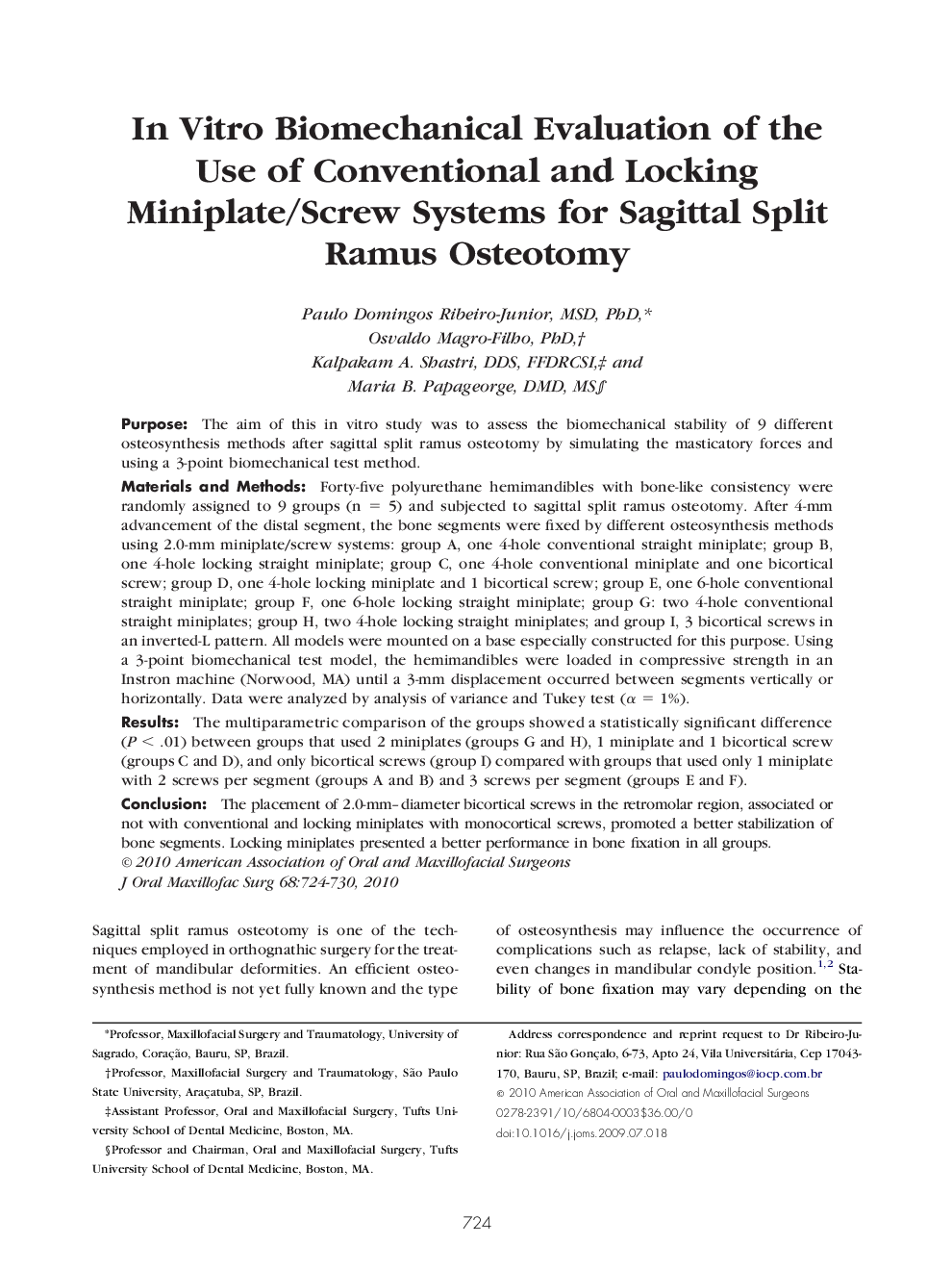| کد مقاله | کد نشریه | سال انتشار | مقاله انگلیسی | نسخه تمام متن |
|---|---|---|---|---|
| 3153699 | 1198037 | 2010 | 7 صفحه PDF | دانلود رایگان |

PurposeThe aim of this in vitro study was to assess the biomechanical stability of 9 different osteosynthesis methods after sagittal split ramus osteotomy by simulating the masticatory forces and using a 3-point biomechanical test method.Materials and MethodsForty-five polyurethane hemimandibles with bone-like consistency were randomly assigned to 9 groups (n = 5) and subjected to sagittal split ramus osteotomy. After 4-mm advancement of the distal segment, the bone segments were fixed by different osteosynthesis methods using 2.0-mm miniplate/screw systems: group A, one 4-hole conventional straight miniplate; group B, one 4-hole locking straight miniplate; group C, one 4-hole conventional miniplate and one bicortical screw; group D, one 4-hole locking miniplate and 1 bicortical screw; group E, one 6-hole conventional straight miniplate; group F, one 6-hole locking straight miniplate; group G: two 4-hole conventional straight miniplates; group H, two 4-hole locking straight miniplates; and group I, 3 bicortical screws in an inverted-L pattern. All models were mounted on a base especially constructed for this purpose. Using a 3-point biomechanical test model, the hemimandibles were loaded in compressive strength in an Instron machine (Norwood, MA) until a 3-mm displacement occurred between segments vertically or horizontally. Data were analyzed by analysis of variance and Tukey test (α = 1%).ResultsThe multiparametric comparison of the groups showed a statistically significant difference (P < .01) between groups that used 2 miniplates (groups G and H), 1 miniplate and 1 bicortical screw (groups C and D), and only bicortical screws (group I) compared with groups that used only 1 miniplate with 2 screws per segment (groups A and B) and 3 screws per segment (groups E and F).ConclusionThe placement of 2.0-mm–diameter bicortical screws in the retromolar region, associated or not with conventional and locking miniplates with monocortical screws, promoted a better stabilization of bone segments. Locking miniplates presented a better performance in bone fixation in all groups.
Journal: Journal of Oral and Maxillofacial Surgery - Volume 68, Issue 4, April 2010, Pages 724–730